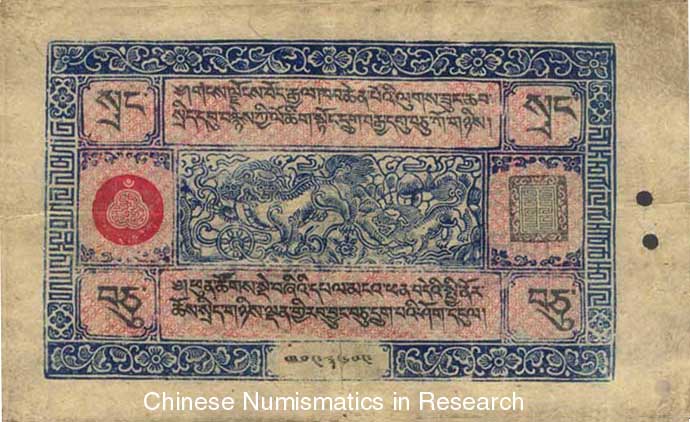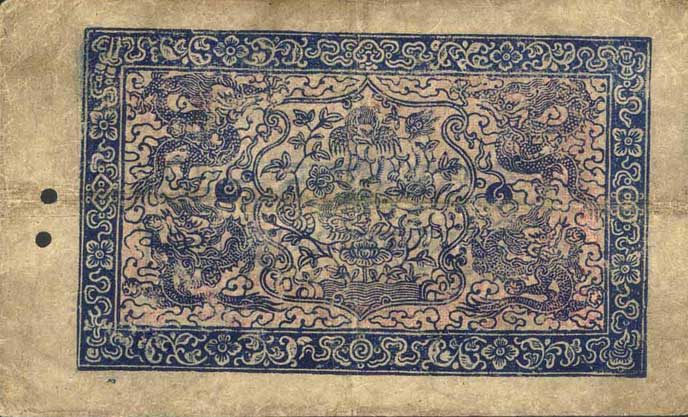The use of money in China could be traced back to at least four thousand years ago. China was also the first country to use paper money, or credit currency in the world. Ancient paper money can only be described in general terms for lack of material objects. About the Pai-Lu P'i-pi  (white deer-skin money) of Han Dynasty and the Fei-Chien (white deer-skin money) of Han Dynasty and the Fei-Chien  (flying money) of Tang Dynasty, I personally have never seen the actual objects. However, the official issuing of paper money in Sung Dynasty is famous in the field of numismatic. [Chiao-Tzu (flying money) of Tang Dynasty, I personally have never seen the actual objects. However, the official issuing of paper money in Sung Dynasty is famous in the field of numismatic. [Chiao-Tzu  (1008AD) and Chien-Yin (1008AD) and Chien-Yin  (1105AD) of Northern Sung and Hui-Tzu (1105AD) of Northern Sung and Hui-Tzu  (1160AD) and Kuan-Tzu (1160AD) and Kuan-Tzu  (1131AD) of Southern Sung]. (1131AD) of Southern Sung].
The use of paper moneys went on through the Yuan and Ming as well as the end of the Qing Dynasty. In 1897, China's first bank, the Commercial Bank of China was established by Sheng Hsuen Huai  with the approval of the emperor, and beginning of issuing modern banknotes in China. Paper notes played their important roles in different stages of the money history of China. with the approval of the emperor, and beginning of issuing modern banknotes in China. Paper notes played their important roles in different stages of the money history of China. |
Note issued by Tibetan Regional Government
10 Srang


 :
:  1987 p.17, 51, 55, 60. (The History of Tibetan Money).
1987 p.17, 51, 55, 60. (The History of Tibetan Money).